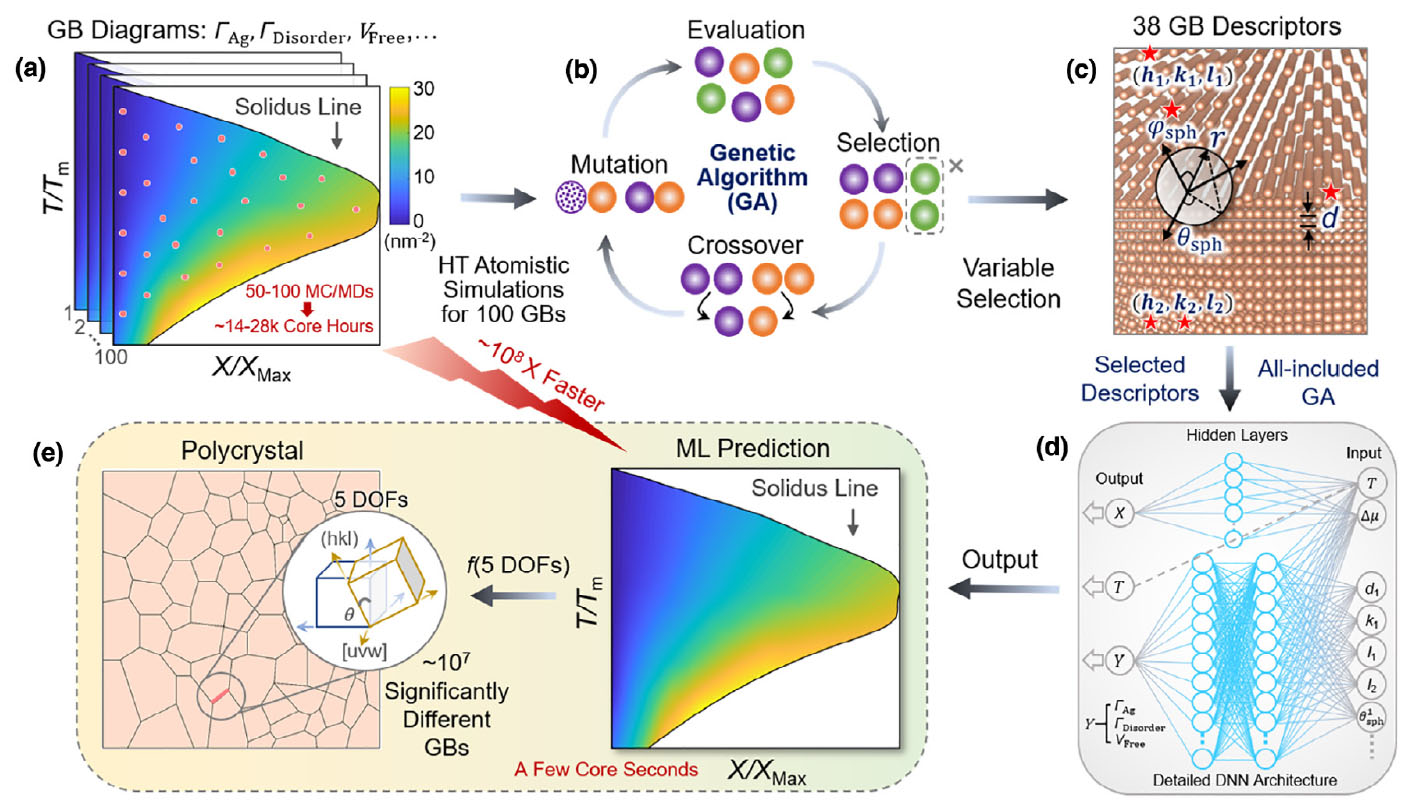We are proud co-authors of an article published in Materials Today on “Genetic algorithm-guided deep learning of grain boundary diagrams”. Grain boundaries (GBs) often control the processing and properties of polycrystalline materials. In this work, we combine isobaric semi-grand canonical ensemble hybrid Monte Carlo and molecular dynamics (hybrid MC/MD) simulations with a genetic algorithm and deep neural networks (DNN) to predict complexion diagrams. The DNN prediction (work by Yunxing Zuo of MAVRL) is ~108 faster than atomistic simulations, enabling the construction of the property diagrams for millions of distinctly different GBs of five DOFs. Excellent prediction accuracies have been achieved for not only symmetric-tilt and twist GBs, but also asymmetric-tilt and mixed tilt-twist GBs. The data-driven prediction of GB properties as function of temperature, bulk composition, and five crystallographic DOFs (i.e., in a 7D space) opens a new paradigm.
Genetic algorithm-guided deep learning of grain boundary diagrams

